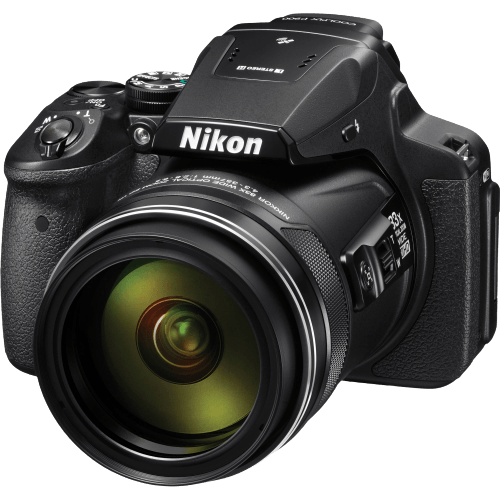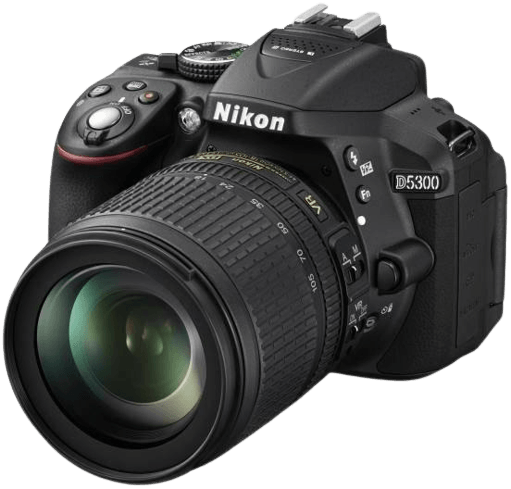Nikon Coolpix P900 vs D5300 Comparison
Nikon Coolpix P900

Nikon D5300

The Nikon D5300 comes out ahead with a score of 57/100, compared to the Nikon Coolpix P900‘s 48/100. Both cameras share some common specifications, such as their announcement dates in the 2010s and similar launch prices. However, the D5300, a DSLR camera, offers better performance than the P900, a bridge camera.
The D5300’s advantages include a lighter weight of 480g and smaller dimensions of 125 x 98 x 76mm, making it more portable. On the other hand, the P900 is heavier at 899g and larger with dimensions of 140 x 103 x 137mm. However, the P900 does have its merits, such as a lower launch price of $599 compared to the D5300’s $800.
Taking these factors into account, the Nikon D5300 is the superior choice due to its better performance and portability. The Nikon Coolpix P900 remains a reasonable option for those on a tighter budget.
Nikon Coolpix P900 vs D5300 Overview and Optics
The Nikon D5300 wins in optics with a score of 65/100, while the Nikon Coolpix P900 scores 53/100. Both cameras share common specifications, such as a CMOS sensor, but differences in their features contribute to the distinct scores.
The Nikon D5300 has a higher megapixel count of 24.2, compared to the P900’s 16 megapixels. This allows the D5300 to capture more detailed images. Moreover, the D5300 has a superior Expeed 4 processor, which contributes to its improved performance. With a DXOMARK sensor score of 83, the D5300’s APS-C sensor size outperforms the P900’s 1/2.3″ sensor, which has a score of 72. Additionally, the D5300 features a Nikon F DX lens mount, enabling users to interchange lenses and expand their photography capabilities.
On the other hand, the Nikon Coolpix P900 has a faster shooting speed of 7 frames per second, compared to the D5300’s 5 frames per second. This makes the P900 more suitable for capturing fast-moving subjects. Furthermore, the P900 offers image stabilization, which the D5300 lacks. This feature helps reduce camera shake and produce sharper images, especially in low light conditions or when using longer focal lengths.
Taking these factors into account, the Nikon D5300 is the better camera in terms of optics, offering higher image quality, a more advanced processor, and a versatile lens mount. However, the Nikon Coolpix P900 holds its own with a faster shooting speed and image stabilization. Ultimately, the choice between these cameras depends on the specific needs and preferences of the photographer.
Nikon Coolpix P900 vs D5300 Video Performance
The Nikon D5300 outperforms the Nikon Coolpix P900 in video capabilities, with a video score of 70/100 compared to the P900’s score of 61/100. Both cameras share some common specifications, such as a maximum video resolution of 1920 x 1080, a maximum video frame rate of 60fps, and built-in time-lapse functionality.
The D5300’s higher video score reflects its better video quality due to its Full HD resolution, which offers sharper and more detailed footage than the P900’s Standard HD resolution. This difference in resolution can make a significant impact on the overall viewing experience, especially when watching videos on larger screens or using the footage for professional purposes.
On the other hand, the P900 does not excel in any specific video aspect compared to the D5300. Both cameras have the same maximum video dimensions, frame rate, and time-lapse functionality, so the P900 does not offer any unique advantages in this area.
In comparing the Nikon Coolpix P900 and the Nikon D5300, it is clear that the D5300 has superior video capabilities due to its Full HD resolution and higher video score. While the P900 does not offer any distinct advantages in video performance, it still provides satisfactory video quality for casual users. However, for those seeking a camera with better video quality, the Nikon D5300 is the recommended choice.
Nikon Coolpix P900 vs D5300 Features and Benefits
The Nikon D5300 wins the comparison with a feature score of 46 out of 100, while the Nikon Coolpix P900 scores 41 out of 100. Both cameras share some common specifications, such as a 3-inch screen size, no touchscreen, flip screen, GPS, WIFI, and no Bluetooth.
The D5300 has a slightly larger screen size at 3.2 inches compared to the P900’s 3 inches. Additionally, the D5300’s screen resolution is higher at 1,037,000 dots, providing a clearer and more detailed image preview. This advantage makes the D5300 better for photographers who want a more accurate representation of their shots on the camera screen.
On the other hand, the Coolpix P900 still has some strong points despite its lower feature score. It possesses a flip screen, GPS, and WIFI, which are also present in the D5300. These features allow for flexibility in shooting angles, location tracking, and easy sharing of images. However, the P900 does not surpass the D5300 in any specific feature.
Considering the feature scores and specifications, the Nikon D5300 is the better camera due to its larger screen size and higher screen resolution. The Coolpix P900, while having some similar features, does not offer any significant advantages over the D5300. Photographers who prioritize image preview quality and a slightly larger screen should opt for the Nikon D5300.
Nikon Coolpix P900 vs D5300 Storage and Battery
The Nikon D5300 surpasses the Nikon Coolpix P900 in storage and battery with a score of 29 points, compared to the P900’s 21 points. Both cameras share similarities in their storage capabilities, as each has a single memory card slot and accepts SD, SDHC, and SDXC memory cards. However, the D5300 proves to be the better option in terms of battery life and type.
The D5300 has a longer battery life of 600 shots, which is a significant advantage over the P900’s 360 shots. Additionally, the D5300 uses the EN-EL14a battery type, while the P900 relies on the EN-EL23 battery. Neither camera supports USB charging.
Despite the P900’s lower score, it does not have any notable advantages over the D5300 in storage and battery aspects. The D5300’s superior battery life makes it a more reliable choice for extended photography sessions or for those who prioritize longer usage without needing to change or recharge batteries.
Nikon Coolpix P900 vs D5300 – Our Verdict
Are you still undecided about which camera is right for you? Have a look at these popular comparisons that feature the Nikon Coolpix P900 or the Nikon D5300:
